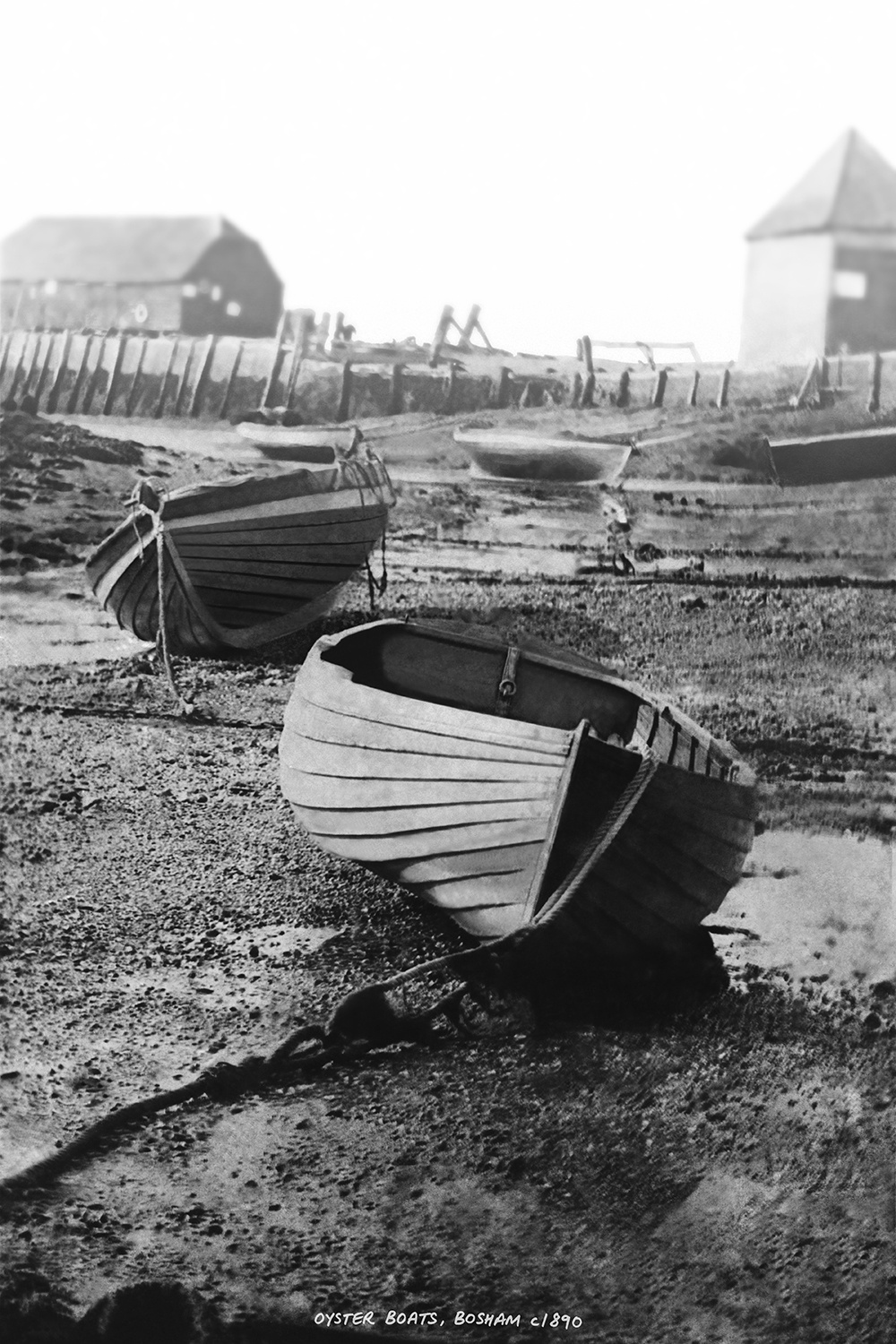Bosham Gallery Archive
In the second half of the nineteenth century the oyster ponds that were located along the foreshore of Cutmill Creek and School Rithe, either side of the Quay played a critical role in Bosham’s oyster fishery. After being dredged up off the French coast, Bosham’s oysters were dropped into growing beds at Rookwood, West Wittering for 2-3 years. Once matured, the fishermen would dredge them up again and move the oysters to the foreshore ponds surrounding the Quay to cleanse for several weeks. The practice was an early form of factory farm fishing.
The oysters needed a great deal of care to protect them from growing over each other, and smothering the smaller ones, which caused suffocation, and the fishermen would continually walk or row out to the ponds to monitor their growth. They were constantly sorting and grading them, and removing mud and seaweed from the ponds, which could also suffocate the oysters. The advantage of the foreshore ponds in Bosham was that they were accessible at all states of the tide, because the oysters were never covered by more than 4 feet of water. This meant that orders could be dispatched to market quickly. The fishermen paid 2s 6d per year (half a crown) in rent to the Lord of The Manor of Bosham for each oyster pond.
Bosham’s oyster boats, pictured here, were built in the village. They were wide rowing boats with low sides, and flat-bottomed to make them stable to work from, the low sides allowed the fishermen to easily dredge and use a fishing net. A cross between a fork and a rake was used to scoop the oysters out of the ponds, into buckets or bags. They were brought ashore and packed into baskets in one of Bosham’s two oyster packing barns, one pictured here on the Quay, and known locally as the Raptackle. The baskets of oysters were then taken by horse and cart to the railway station, a mile to the north. A small number were exported to the Continent, but the majority of Bosham’s oysters were sold at fish markets in Portsmouth, Southampton, Brighton, Winchester, Hove, Guildford, and various boroughs of London.
By 1900, the oyster industry was booming. It was the managed growth and time allowed for cleansing the oysters in Bosham’s foreshore ponds that meant the fishermen significantly improved the quality of the oysters over the nineteenth century, stimulating the demand and increasing their market price. Oysters began to be purchased to grace the tables of the rich and aristocratic, and had been elevated from a subsistence food for the masses, to a delicacy for the upper classes and nobility.
© Luke Whitaker
